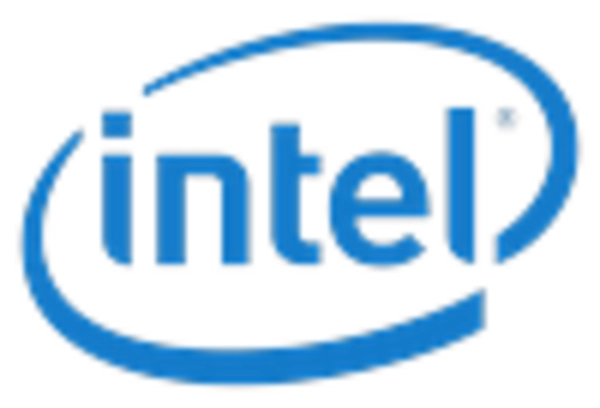Emergence of 5G Technology
The rollout of 5G technology is poised to have a profound impact on the Semiconductor Device for Processing Application Market. With the advent of 5G, there is a heightened demand for semiconductor devices that can support faster data transmission and improved connectivity. This technology enables a wide array of applications, including smart cities, augmented reality, and enhanced mobile broadband. The semiconductor market is expected to witness a significant uptick as telecommunications companies invest in infrastructure to support 5G networks. Analysts suggest that the 5G semiconductor market could reach billions in revenue, underscoring the critical role of semiconductor devices in this transformative phase.
Rising Adoption of Edge Computing
The Semiconductor Device for Processing Application Market is also benefiting from the rising adoption of edge computing. As businesses seek to process data closer to the source, the demand for specialized semiconductor devices that facilitate edge computing solutions is increasing. This shift allows for reduced latency and improved performance in various applications, such as industrial automation and smart devices. The edge computing market is projected to grow significantly, with semiconductor devices being integral to its development. This trend indicates a shift in how data is processed and highlights the importance of innovative semiconductor solutions in meeting the evolving needs of industries.
Focus on Renewable Energy Solutions
The Semiconductor Device for Processing Application Market is witnessing a growing emphasis on renewable energy solutions. As the world transitions towards sustainable energy sources, semiconductor devices are essential in optimizing energy efficiency and performance in renewable energy systems. For instance, semiconductor technologies are critical in solar inverters and wind turbine controllers, enabling better energy conversion and management. The renewable energy market is expected to expand rapidly, with investments in semiconductor devices playing a pivotal role in this growth. This focus on sustainability not only drives innovation in semiconductor technology but also aligns with global efforts to reduce carbon footprints.
Growth of Data Centers and Cloud Computing
The Semiconductor Device for Processing Application Market is significantly influenced by the expansion of data centers and cloud computing services. As organizations increasingly migrate to cloud-based solutions, the demand for efficient and powerful semiconductor devices rises. Data centers require high-performance processors and memory solutions to handle vast amounts of data and support various applications. According to recent estimates, the data center market is anticipated to grow at a compound annual growth rate of over 10%, which directly correlates with the increasing need for advanced semiconductor devices. This growth presents opportunities for manufacturers to innovate and develop cutting-edge solutions tailored for processing applications.
Increasing Demand for Advanced Electronics
The Semiconductor Device for Processing Application Market is experiencing a surge in demand driven by the proliferation of advanced electronic devices. As consumer electronics become more sophisticated, the need for high-performance semiconductor devices has escalated. For instance, the market for smartphones and tablets is projected to grow significantly, with semiconductor devices playing a crucial role in enhancing processing capabilities. This trend is further supported by the automotive sector, where the integration of semiconductor devices in electric vehicles and autonomous driving systems is becoming increasingly prevalent. The overall market for semiconductor devices is expected to reach substantial figures, indicating a robust growth trajectory fueled by these advancements.














Leave a Comment